Exhibition place:1st Floor of Fashion Gallery
Exhibition time:2020.6 - 2020.8
Preface: Roads are Shaped by People
As world heritage, the Silk Roadsoriginated from Zhang Qian’s first mission to the Western Regions in 138 BC. In 1877, German geographer Ferdinand von Richthofen firstly proposed the academic concept of the Silk Roads;in 2014, UNESCO officially approved the Silk Roads as cultural heritage recognized by the whole world. From Zhang Qian’s first mission to UNESCO’s final decision,2,252 years has passed.
Roads are shaped by people. The history of the Silk Roads from inexistence to existence, from obscurity to fame is not only history of human exploration and discovery, but also academic history of innumerable people’s engagement in historical research and cultural heritage protection related to the Silk Roads. In the early period, innumerable brave envoys like Zhang Qian, tenacious believers, and adventurous merchantsshaped the Silk Roads step by step. The birth and naming of the Silk Roadsresulted from exploration and research by a group of archaeologists and historians, and the Silk Roadsare now world heritage thanks to the efforts of many cultural heritage protectors in awe of history for the benefit of future generations.
This year marks the sixth anniversary of the inscription of the Silk Roads on World Heritage List.Under the guidance of the National Cultural Heritage Administration and the People’s Government of Zhejiang Province, and the support of relatedinstitutions along the Silk Roads and many Silk Roads experts and scholars, we have gathered hundreds of historical materials and archaeological relics from both at home and abroad. We are holding the 1st Silk Roads Week and Special Exhibition “The Silk Roads: Before and After Richthofen” here to letvisitors review the long historical background of the Silk Roadsand thus deepen their understanding of the profound cultural foundation of the Belt and Road Initiative.
1. Before Richthofen:East-West Transportation in History
Both the land and maritime routes of the Silk Roadsformally established during the reign of Emperor Wudi of the Han Dynasty. However, hundreds of years before, the Qin Dynasty, ancient Persia, Macedonia, the Maurya Dynasty, and other great powers continued to expand into faraway places. There were alreadypeople-to-people exchanges between the East and West of certain scales mediated by Scythians and other grassland tribes. After the establishment of the Silk Roads, they were not always unobstructed. Affected by factors such as war, regime change, and climate change, East-West transportationwas often interrupted and went through ups and downs. The routesthrived, declined, and changed many times. The persons, thoughts, and materials circulated in various periods had different characteristics. Use of the maritime and land routeswas concurrent, complementary, or disproportionate. In general, people traveling on the Silk Roadsmainly fell into three categories: envoys, merchants, and religious people. Their numbers varied from huge diplomatic missions and trade caravans of thousands of people to strong persons walking alone on long roads in search of Buddha’s truth. All their traces converged into many different routes, and all the routes intertwined to form a crisscrossingSilk Roads network.
1.1 The Routes of Envoys
Because of ancient Chinese title conferring system and tributary trade, the Chinese central plainsand countries in the Western Regions frequently exchanged envoys after Zhang Qian’s mission. Most of these Chinese and foreign envoys are not mentioned in historical records, and only a few like Gan Ying, Song Yun, Wang Xuance, Zheng He, and Chen Cheng known by people.After returning home, some envoys wrote travel notes, from which we can infer directions and traffic conditions of the Silk Roads in the past. The Han bamboo slips unearthed from the Site of Xuanquan Posthouse in Dunhuang not only preserve a lot of envoy information, but also include a set of mileage bamboo slips.
1.1.1 Zhang Qian’s Pioneering Journeys: The Routes of Zhang Qian and Ban Chao
In 138 BC and 119 BC, Zhang Qian went to the Western Regions as envoy twice. These missions are historically called“Zhang Qian’s pioneering journeys”, marking the official establishment of the Silk Roads. In 73 AD, Ban Chao gave up civilian pursuits for a military career, developed the Western Regions, and reopened the Silk Roads.
Terracotta Warriors
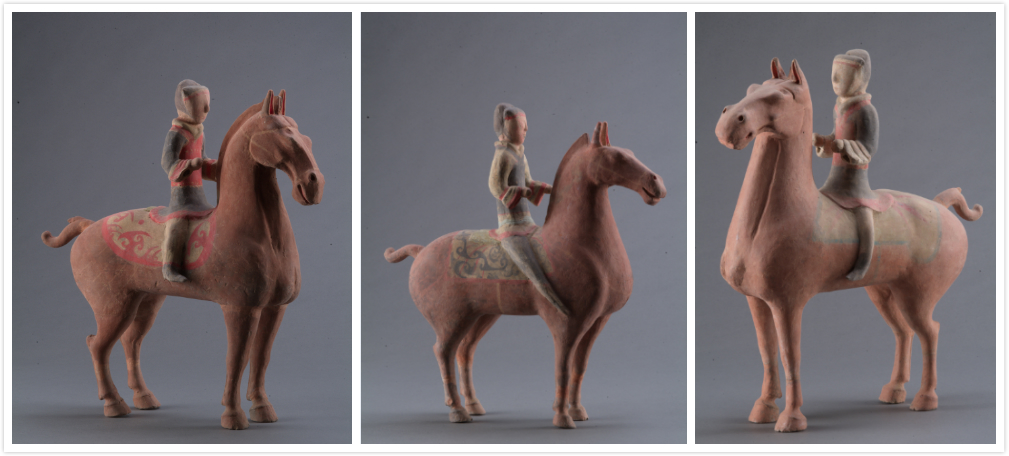
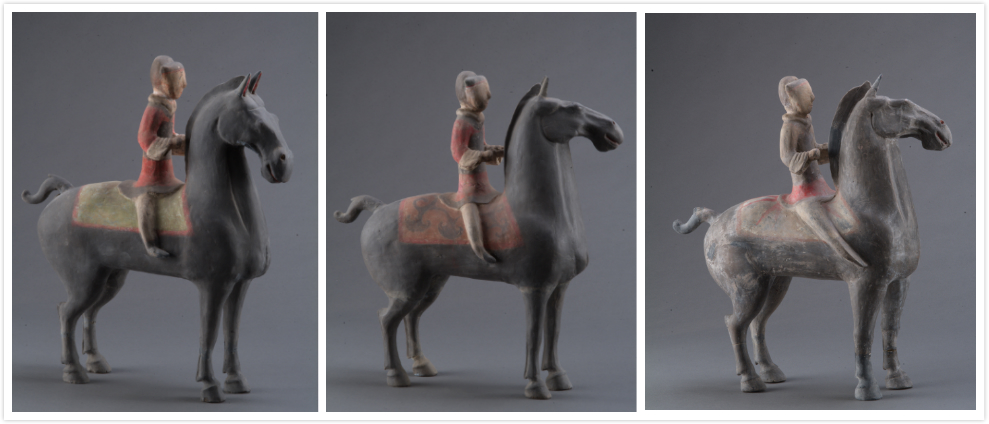
Long: 35cm,Width: 12cm,Height: 35cm
Pictorial Tile with Postman (replica)
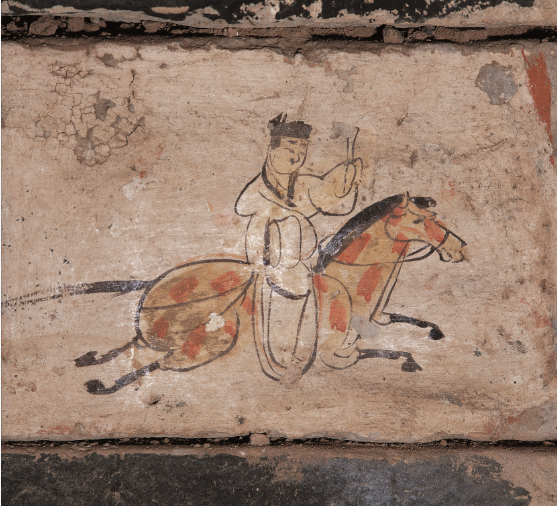
Long: 35cm,Width: 17.3cm
1.1.2 Departure from the Border and Return to China
The policy of pacification through marriage, one of the foreign policies during Han dynasty, as marring daughters of the Han imperial family to the rulers of the minority groups. The first to implement it was Emperor Han Gao, and the initiator was Liu Jing.
3. Painting of Cai Wenji Returns to Her Homeland

Dynasty: Jin(B.C.1115-1234)
Long: 129cm,Width: 29cm
Painting of Eighteen Songs of A Nomad Flute

Dynasty: Ming(B.C.1368―1644)
Long: 1319cm,Width: 30cm
1.1.3 The Routes recorded in Bamboo Slips
According to records, bamboo and wooden slips were mainly used as writing materials and carriers from the 17th century B.C. to the 4th century A.D. Over the past 100 years, a large number of bamboo and wooden slips of Han dynasty were found in Gansu and Xinjiang. It is the original records that truly and vividly record the history of this region. They provide important material of great scientific value in the fields of transportation, science and culture, religious beliefs, and social life.
Bamboo Slips from Xuanquan Posthouse
Xuanquan Posthouse is a site where the largest quantity of bamboo and wooden slips were unearthed with the richest content, in addition to Juyan Site. This site is located southeast of Tianshuijing, Dunhuang, Gansu Province, named after the words “Xuan Quan Zhi” on the unearthed bamboo and wooden slips of the Han Dynasty. More than 21,000 bamboo and wooden slips were unearthed from the site. There were also lacquer, wood, pottery and linen, fur, silk, and paper and other articles unearthed. Thosebamboo slips reflect the name, sequence and distance of sites along the Silk Roads.
1.2 The Routes of Monks
After An Shigao and Zhu Shixing, many Buddhist monks were active along the Silk Roads in the Medieval Period. They either wenteastwards to carry forward Buddha’s truth or went westwardsin search of Buddha’s truth. They left a lot of travel notes revealing directions of the Silk Roads, with Faxian, a monk of the Eastern Jin Dynasty, and Xuanzang, a monk of the Tang Dynasty, being the most representative ones. Faxian went to India by land, and returned by sea. Xuanzang went to Central Asia along the northern route of the Tarim Basin before going south to India, and returned along the southern route of the Tarim Basin.
Statue of Budda
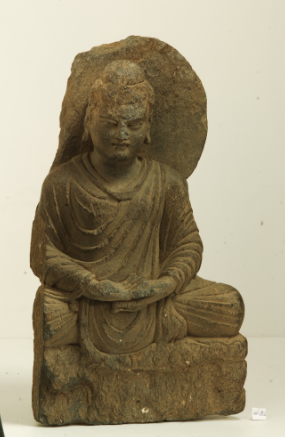
1-3 B.C.
Height: 35.8cm,Width: 19.8cm
Stone
Statue of Budda
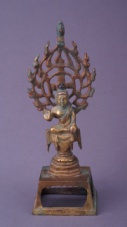
Dynasty: Tang(B.C. 618—907)
Height: 11cm
Bronze
Statue of Budda
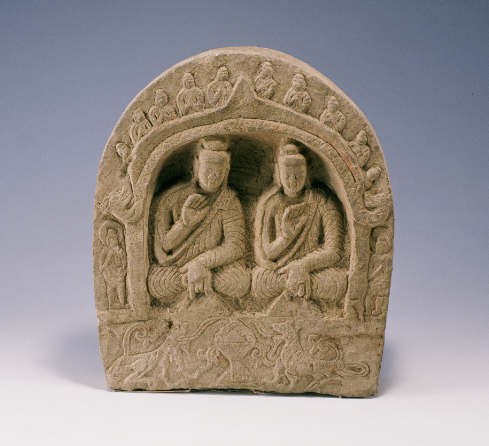
Dynasty: Northen Wei(B.C.386—534)
Height: 30cm,Width: 30cm
Stone
Statue of Budda
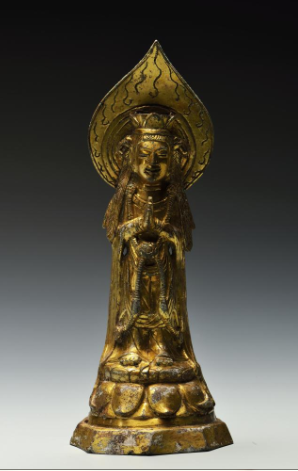
Dynasty: Sui(B.C.581—619)
Height: 19.5cm
Gilt Bronze
Pelliot Chinois 2005 (replica)
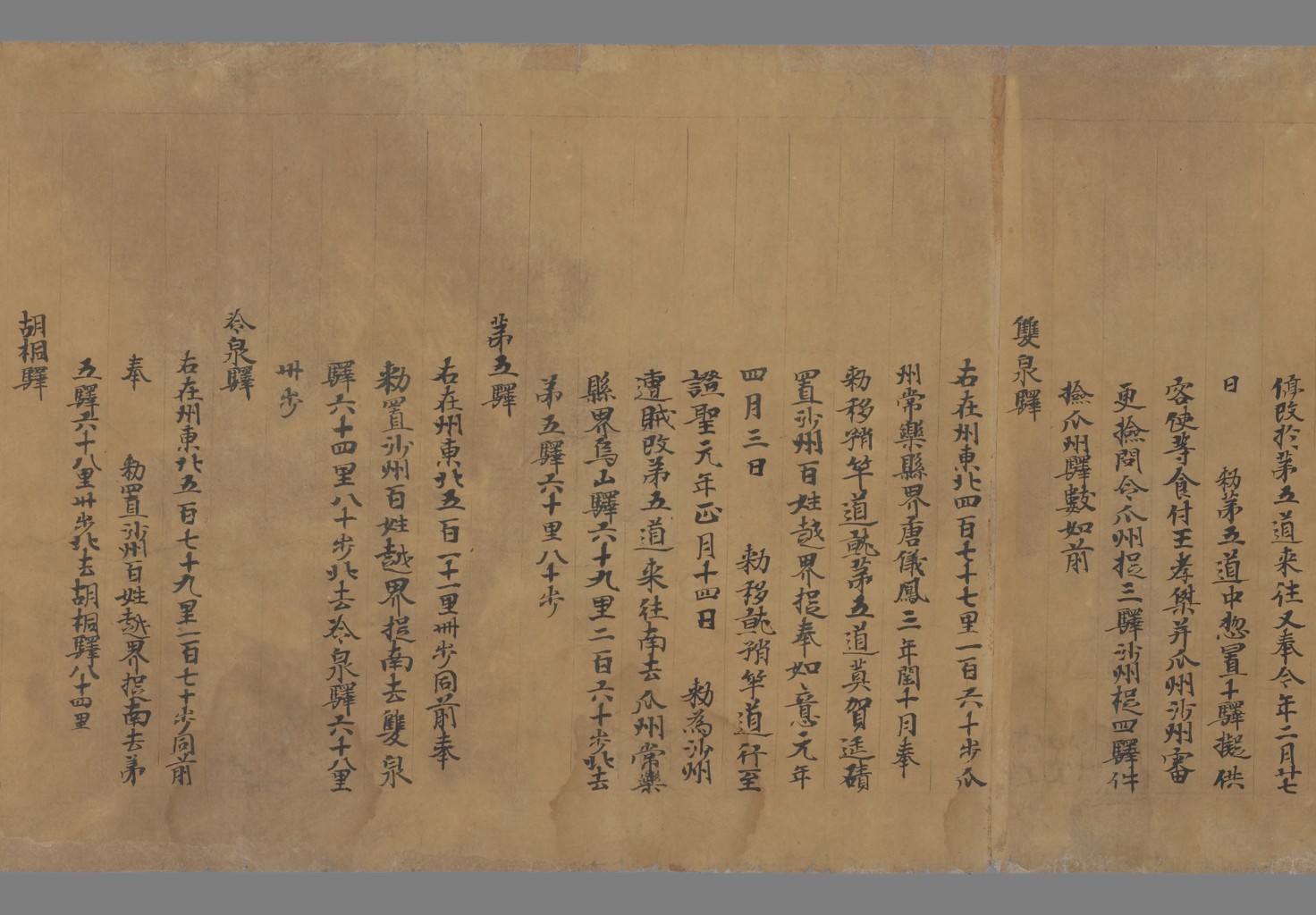
Dynasty: Tang(B.C. 618—907)
Long: 935cm,Width: 27.3-28.6cm
Paper
1.3 The Routes of Merchants
Pursuit of profit is merchants’ nature. They go anywhere for profit. Lots of merchants from various countries were active along the Silk Roads in ancient times, including well-own Rouzhi, Sogdian, Uighur, and Jewish people along land routes and Romans, Persians, Arabs, etc.along the maritime routes. From documents left by them and handed down from ancient times such as Periplus of the Erythraean Sea and The Travels of Marco Polo as well as inscriptions in valleys of the upper reaches of the Indus River, ancient Sogdian letters, and other unearthed documents, we can get a glimpse of ancient commercial routes and trade networks.
Rubbing about An Lu-shan (replica)
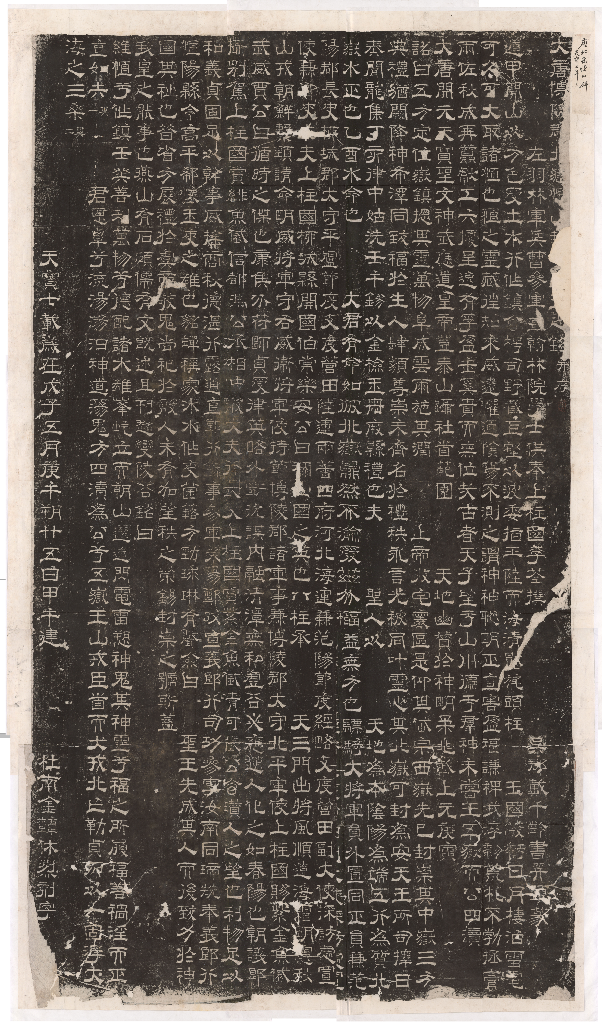
Long: 186cm,Width: 104cm
1.3.1 The Route of Sulayman’s Journey to the East in 851
From the second half of the 8th century, maritime routes of the Silk Roads thrived increasingly, and gradually became more important than land routes. The maritime route from Guangzhou to foreign lands in the Tang Dynasty was the earliest name for China's Maritime Silk Roads. According to New Book of Tang · Geography, this route was 14,000 kilometers in length, starting from Guangzhou, and was the longest in the world at that time, passing through more than 100 countries and regions, including Southeast Asia, northern Indian Ocean, the Red Sea coast, Northeast Africa and the Persian Gulf. Arabic document Ancient Accounts of India and China (written in 851) records what merchant Sulayman saw and heard during his journey to the East, and mentions the sea route from the Persian Gulf to the South China Sea roughly. This is consistent with the maritime route from Guangzhou to foreign lands recorded in New Book of Tang · Geography.
1.4 The Routes of Missionaries
The spread of Christianity to China in ancient times went through three main periods: Nestorians (Luminous Religion, Arkagun) in the period between the Tang and Yuan dynasties, Catholic Franciscans in the Yuan Dynasty, and Catholic Jesuits in the Ming and Qing dynasties. Memorial of the Propagation in China of the Luminous Religion from Daqin records the spread of Nestorianism in the Tang Dynasty. Franciscans in the Yuan Dynasty often went to Mongolian capital Karakorum or the Great Capital via prairie Silk Roadsto accomplish missions for the Pope, leaving many travel notes. Among the Jesuits in the Ming and Qing dynasties, Matteo Ricci was the first to come to preach in China.
Stone from a Nestorian Tomb
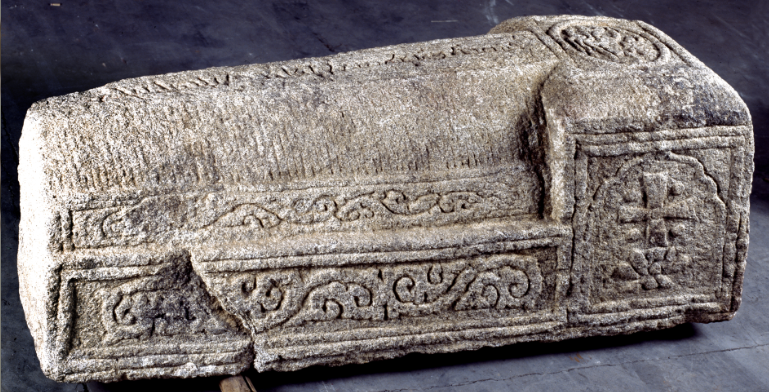
Dynasty: Yuan(B.C.1271—1368)
Long: 122cm,Width: 36cm, Height: 46cm
1.4.1nThe Routes of Marco Polo
Mongolia rose in the 13th century, and the land and maritime Silk Roads remained unobstructed for more than 100 years. Merchants, envoys, and travelers represented by Marco Polo came and went between both ends of Eurasia. Marco Polo left his hometown in 1271, passed Iran, Central Asia, the southern route of the Tarim Basin, and the Gansu Corridor by land, and arrived in the Upper Capital of the Yuan Dynasty in 1275. He departed from Quanzhou in 1291, reached the Hormuz Port in the Persian Gulf via Ma’abar, India by sea, and returned to his hometown.
1.4.2 Matteo Ricci
Matteo Ricci (1552—1610) was an Italian Catholic Jesuit. He departed from Lisbon by boat in 1577, passed Goa, India, and reached Macao in 1582. He entered China’s inland in 1583, preached in Zhaoqing, Shaozhou and Meiling in Guangzhou, Nanchang, etc. successively, and settled down in Beijing in 1601. Matteo Ricci was a communicator between the Eastern and Western cultures. He actively disseminated Western modern science to China, drewGreat Universal Geographic Map, translated Euclid’s Elements of Geometry with Xu Guangqi, and introduced the Chinese culture to Europe.
Matteo Ricci’s Great Universal Geographic Map

Dynasty: Ming(B.C.1368―1644)
Long: 382cm,Width: 168cm
Paper
2. Name the Silk Roads: Richthofen and His Period
The industrial revolution of the 19th century promoted large-scale economic globalization, and the earliest industrialized European and American countries also started an upsurge of global exploration. At the beginning of the 19th century, “Oriental studies” appeared in the Western academia dominated by France and Britain. Many well-known geographers and geologists emerged then and began to serve scientific and political purposes. Geological surveys, mapping, and geographic research became more and more precise in this stage. German geographer Richthofen was benefited as a result.
In 1877, Richthofen proposed to call the transportation routes mainly for silk trade between the Han Dynasty of China and the south and west of Central Asia and India “Silk Roads”. This definition was still “accidental”to some extent then. In the late 19th century and early 20th century, various foreign expeditions andthe later Sino-Swedish Scientific Expedition to the North-Western Provinces of China conducted archaeological explorations in the Western Regionswith the Tarim Basin as the center. The materials they obtained through investigation in this period veritably substantiated and proved the“Silk Roads” proposed by Richthofen. Particularly, Richthofen’s student Sven Hedin wrote survey recordson the“Silk Roads” – The Silk Road, made decisive contributions, and carried forward the Silk Roads theory.
2.1 The Period of Global Exploration
In the Western industrial society Richthofenwas in, the 19th century was a period of global exploration. In 1866, Britaininvented the transatlantic telegraph cable; in 1871, British trip companyThomas Cook launched “global trip” services; in 1872,French writer Jules Verne’s novelAround the World in 80 Days sold well.
2.2 Ferdinand von Richthofen
Ferdinand von Richthofen was a German geographer and geologist. He published nearly 200 geological geographic works in his lifetime, and his geological surveys and research on China were important academic achievements. From 1868 to 1872, Richthofen conducted seven geological surveys in China, covering 13 provinces of China in that period. His research results exertedmajor influence on the emergence and development of modern Chinese geology and geography. In 1877, Richthofen proposed the concept of the “Silk Roads” for the first time.
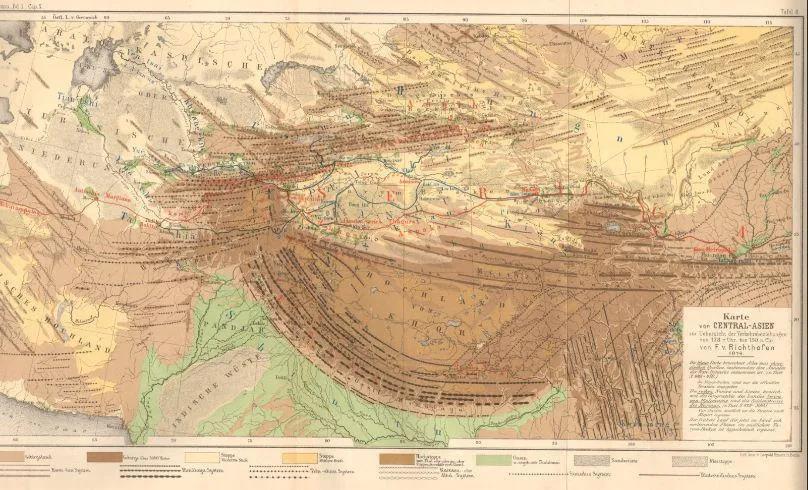
2.3 Foreign Explorers
In 1890, Westerners discovered the so-called “The Bower Manuscript” in Kuqa, Xinjiang by chance, and thus ushered in the period of archaeological exploration in the Western Regions focusing on the ruins around the Tarim Basin. Various foreign powers such as Russia, Britain, and Sweden all sent expeditions to excavate and collect ancient cultural relics and documents. As a result, archaeological exploration activities in the Western Regions peaked in about 15 years in the early 20th century.
collection book from KozuiOhtani
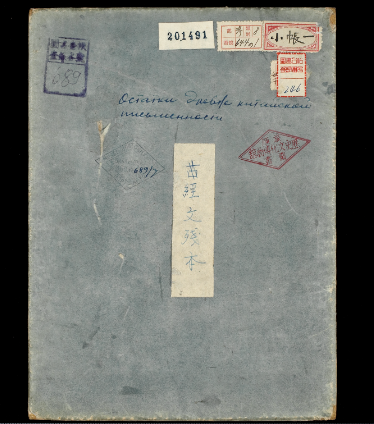
Dynasty: Tang (B.C. 618-907)
Long: 24.2cm,Width: 18.2cm
2.4 Chinese Scholars
In the 19th century and early 20th century, facing the crisis of the northwestern border areas, Chinese scholars began to establish their own geography and geology, and started a nationwide geological survey. “Study of history and geography of Northwest China” also became a “renowned and revealing discipline” then.
2.4.1 Scientific Expedition to the North-Western Provinces of China
In eight years from the 1920s to the 1930s, the “Sino-Swedish Scientific Expedition to the North-Western Provinces of China” headed by Xu Bingchang and Sven Hedin conducted scientific surveys in Inner Mongolia, Gansu, Xinjiang, and other places, and made fruitful achievements in meteorology, geography, geology, paleontology, archaeology, etc. This was the largest Sino-foreign scientific survey activity in modern China with lofty status and important influence in the history of Chinese modern science and the history of Sino-foreign scientific exchanges.
2.4.2 Dunhuang Studies
Dunhuang Studies, a discipline born after the Dunhuang Library Cave and its documents were discovered, mainly focus on Dunhuang’s grotto art and documents from the Library Cave, involving many fields of philosophical and social sciences such as religion, art, history, geography, economics, language and literature, ethnology, and folklore.
3. Bid for World Heritage Status: The Silk Roads Became World Heritage
In the late 19th century andearly 20th century, domestic and foreign academic circles gradually recognized the concept of the “Silk Roads”based on research and exchangesin the period of archaeological exploration in the Western Regions. With the deepening and refinement of “Silk Roads” research, this concept was also expanded or enriched continuously.
Based on the strategy of global heritage protection, for the purpose of promoting heritage protection work in Central Asia, back in 1988, UNESCO put forward the vision of the “Silk Roads” as world heritage in its reportIntegral Study of the Silk Roads: Roads of Dialogue. From the proposal of the concept to the successful bid for world heritage status, work for the Silk Roads’ world heritage statuslasted 26 years.Interpretation of the “Silk Roads” from the height of human civilization finally showed the outstandinguniversal value of the “Silk Roads” to the world. The Silk Roadsbecame common heritage of all mankind.
4.1 Popularity of the Silk Roads
In the 1950s and 1960s, because of frequent use of “Silk Roads” in friendly exchanges with foreign countries at the government level, the phrasebecame known to the general public and academia and spreadgradually. In the mid and late 20th century, books, radio and television publicity, trips of many scholars, writers, painters, and photographers along the Silk Roads, etc. made the “Silk Roads” popular in China and Japan. All these contributed to the popularity of the Silk Roads.
Ikuo Hirayama’s Silk Road
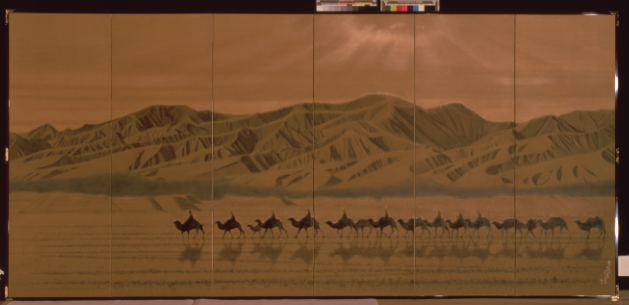
B.C. 1982
Long: 363.5cm,Width: 171cm
4.2 UNESCO’s Five Expeditions
In 1988, UNESCO launched the “Integral Study of the Silk Roads: Roads of Dialogue” project, which established cooperative relationship between researchers and media in every stage through organization of international expedition activities, seminars, conferences, etc., made public research activities and results, and thus stimulated people interest in the Silk Roads again in the world.
4.3 Bid for the Silk Roads’ World Heritage Status
The bid for world heritage status lasted 26 years, and the heritagespanned nearly 2,000 years of history and more than 10,000 kilometers of geographical space. On June 22, 2014, “Silk Roads: The Routes Network of Chang’an-Tianshan Corridor” jointly presented by China, Kazakhstan and Kyrgyzstan was successfully inscribedon theWorld Heritage List. The “Silk Roads” became China’s most globally influential and open cultural heritage.
Closing
Spanning thousands of miles and years, the Silk Roads embody the core spirit of peace and cooperation, openness and inclusiveness, mutual learning, and mutual benefit. This has become precious heritage of human civilization, which shows that long distancesand dangerous journeys are not insurmountable. If we take the first step towards each other steadily, we can embark on a path leading to friendship andcommon development.
Thousands of years has passed, and the future is also promising. The Silk Roadsarepeople’s common aspiration, anda community with a shared future for mankind is people’s wish. We will still transcend time and space, cross dangerous shoals, and advance towards tomorrow hand in hand with the people of the world.
 Pay attention to us
×
Pay attention to us
×